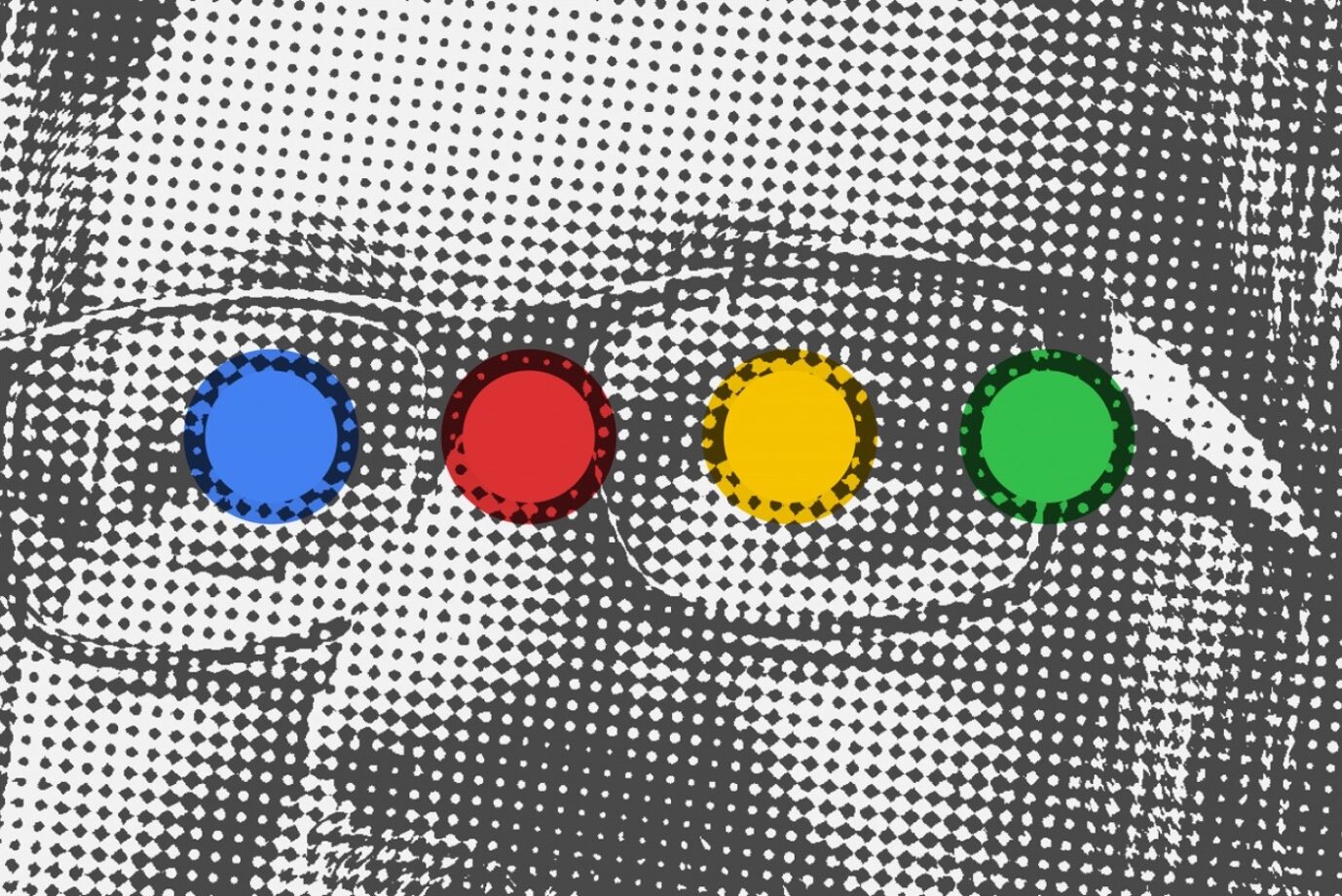
Okay Google, what’s next? Musings on where creative agencies might be heading.
We’ve been talking about how print’s not dead in light of digital marketing leader MailChimp’s recent innovation – actual print. Whilst that’s a truism, it doesn’t mean the digital world is going away, or that we’re wistfully wishing for a simpler time. It’s more that people are people and perhaps pressing delete is easy? Print might have gone the way of 12-inch vinyl — we make less, but people still like it, fetishise it even — but digital is the new normal, the everyday. So normal it’s ordinary and MailChimp are being disruptive with, well… PRINT! So what is next digitally?
The clue is in the title, but before we get to that, how did digital arrive in our lives, evolve and become the default position? For context, this ain’t Wired Magazine and I’ve never written code. I am, on the other hand, the right age to have experienced the whole digital shabang from the kick-off.
The World Wide Web (for me) peeked out from its techie, scientific underground the year I graduated, with mysterious words appearing on the bottom of television ads, the full ‘address’ – http slash, slash, colon w… w… w… dot some-company-name. But what on earth did it actually mean? It meant something completely new, and not something any of us designers had trained for in the early nineties. Within a couple of years I’d got stuck in and was designing web 1.0 sites. It was exciting, edgy, I was doing something new and it looked… well, crap. Nothing lined-up neatly, everything was a gimmick and the ‘webmasters’ you had to employ to unearth the magic code, were, shall we say ‘characters’.
We had ‘New Media Departments’, Flash intros appeared (and thankfully left) and we thought pop-ups were a good thing. We carefully nuanced our sidebars and our rollover states. Our clients talked about the paperless office, we knew that after the year 2000 we’d never print anything again. Thankfully web 2.0 arrived and finally stuff lined up. The web 1.0 ‘webmasters’ died out (sorry, not sorry) but if ever a metaphorical asteroid was needed for a bunch of tech dinosaurs – it was for that lot. Who’s lining stuff up now, eh?
At this point the web started to become normal. By normal, I mean like print. Websites – perhaps a redundant term – didn’t look like ‘websites’. They’re just a backlit version of some familiar and well-designed content. It’s normal. It’s mainstream. My 70 year-old Mum has a tablet. We just swish through to the thing we want to read or watch and we don’t really think about the tech of it. We probably have Apple to thank for that. Ever watched a one-year-old swipe instinctively? Scary stuff.
So now I’m getting on with my job and, what’s this? social media appears. It emerged at the end of my twenties, I took notice in my early thirties (as did the agency I worked at) and now in my (ahem) forth decade I probably spend more time thinking about it professionally than I do personally. Sure I noodle around on Twitter whilst standing in a queue, but I’m old enough to know that not looking at it from time-to-time is better for my busy mind.
Social media is a strange thing. I watched Mark Earls, a bloke much smarter than I am, talk all things social media at a conference back in 2006 – the buzz around the crowd being how it was the (free) saviour of marketing. Yay! Mr Earls explained how social media was just people being people. Nothing new. A digital extension of how we behave down the pub. Some bright sparks built a system that meant the funny, daft thing you said about last night’s telly isn’t just heard (or seen) by the person who’s just come back from the bar with a bag of nuts. That stuff was fun in the early days but I hardly need to mention the scary flip-side of where we are now Mr President.
Let’s get back to designing stuff. Social media came to save us. We created assets and content, still do, and we broadcast away. Some feels positive, some not. Did those 5,000 impressions mean anything? Plus, a decade of pokes and tweets has really shifted the audience using those platforms. I hope you’re paying attention.
Facebook is still a behemoth, but ask an 18 year-old and I doubt they’d care. My own research is only anecdotal, but chatting with some Undergrads and yeah, Facebook, it’s “for my Mum”. Ouch. That’s fine if you’re selling to mums, but have a Google, it’s definitely a thing.
It’s my job to keep across stuff of course, so I know that half a billion teens are using something called Tik Tok. Can every emerging app be turned into a marketing opportunity? Probably. Do I care? Not so much. It’s been a brave new world since 2002, but how do we say “hey, check out my stuff” without people glazing over? We all skip stuff personally, but want it promoted professionally. I’m not sure I want to be exposed to promoted content like Alex at the end of A Clockwork Orange. Skip in five seconds?
Over Christmas dinner someone asked if those ads that pop up on Facebook for stuff they’ve Googled was deliberate. Erm, yeah… unfortunately some of us aren’t going to make it.
In 2007 the iPhone arrived, there are other smartphones of course, but back then the world was waiting for Apple’s. Like web and early social media it was another line in the sand, and for mobile market leaders looking the other way (Nokia) a nail in the coffin. The game changer came a year later, with the App Store. A new economy appeared and we now download and pay money for stuff that kinda doesn’t exist. Well, it gave us agency types something else to think about as everyone needed an App. Psst, they didn’t really.
The digital world is going to shift soon with Web 3.0 apps attempting to return us to Web 1.0 freedoms – loosening Google’s grip and sticking two fingers up to Zuck. I’m getting across this stuff. I’ve downloaded the Brave browser, I know what DuckDuckGo is. I don’t pretend to know exactly how web 3.0 is going to disrupt the silicon giants, but it might be fun to watch. Then there’s the Internet of Things which is *the* actual next big shift. That’s bigger than this piece and I’m not that clever so I’m going to stop the tech talk. YouTube should help you here.
So what’s actually next for the likes of us and our clients?
Probably voice. It’s already here, “Alexa – order writing for dummies”. We’ve had Siri for a while, Google Assistant too, and I suspect the device you’re reading this on will talk to you if you ask nicely. It’s all relatively new and still feels a bit gimmicky in terms of how us ordinary folk might use it. I’ve seen companies starting to offer voice as a service. How does your brand handle itself if someone barks a command at one of those electronic Pringle tubes?
So will we have stopped typing in the next five to ten years? For some things sure, Google and Amazon are just investing too much. We don’t sign when paying with plastic – even that four-digit pin was dropped for a quick 30 quid ‘bip’.
We might start talking to inanimate objects more, they might even become embedded in our workplace. “Okay Google, design me a logo” — a few marketeers might have their fingers crossed here. AI hasn’t got that kind of judgement just yet, thank goodness — “I’m sorry Dave, I can’t make the logo bigger” — but sitting in a meeting and asking for July’s sales figures to be put on screen or how many spares are in the warehouse? “Okay Google, notify the distribution centre”. You don’t even have to put your coffee down. It’s all a bit Star Trek, but it’s kinda here, and as web and social media became creative challenges for us agencies I guess we’re going to be bringing digital speech into our brand guidelines.
I recently gave a short talk to some graphics students and said as much — I didn’t train for the internet, social media or apps. But as a creative it’s not just the obvious stuff, we spend our time figuring out what people need, and voice could be next. The outcomes expand and change but a lot of the challenges stay the same. Tech is fast. Evolution isn’t. And people are still people. We’ll pick up print when it’s relevant and swipe n’ click when it’s not, and those fresh-faced graphics students are training for stuff that probably doesn’t even exist yet.
—
Postscript. Remember I mentioned that print wasn’t dead — MailChimp send physical mail? Well H&M just sent me a printed ‘thank you’ for shopping online. Delete. Skip. Print, again?






